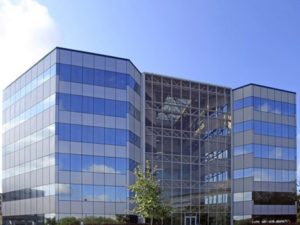

The fourth in a series of articles this week on energy innovation and the American economy.
Methanol is a bit of a mystery. It is the simplest form of hydrocarbon, one oxygen atom attached to a simple methane molecule. Therefore it burns. It is manufactured in small quantities, but production could be ramped up at any time.
It’s the fuel that would make the best and most convenient substitute for gasoline in automobiles and small trucks. It has about two-thirds the energy value of gasoline, but its high octane rating pushes this up above 70 percent. It is a liquid at room temperature and therefore would fit into our current gasoline infrastructure – as opposed to compressed natural gas or electric vehicles, which require a whole new delivery system.
It is also much less cumbersome than corn ethanol, which now requires nearly half the annual corn crop produced in the U.S. to provide only 3 percent of our energy needs. Methanol made from natural gas would now sell for about $1 less per gallon than gasoline. Methanol can also be made from food waste, municipal garbage and just about any other organic source.
Substituting methanol for gasoline in our current automobile infrastructure is an easy technological fix. Car engines can burn methanol with a $200 adjustment that can be performed by any mechanic. You might have to fill up a little more often but the savings on fuel would be significant – about $600 a year.
So what’s stopping us? For starters, methanol seems to be caught in a time warp. It is the dreaded “wood alcohol” of the Depression era. Methanol is poisonous, as opposed to (corn) ethyl alcohol, which only gets you drunk. (In fact, commercial products such as rubbing alcohol are “denatured” by adding methanol so people will not drink them.) But gasoline is poisonous too, as are many, many other oil products. Yet somehow methanol has got caught up in old EPA regulations that make it illegal to burn in car engines – even though it is hardly different from the corn ethanol that now fills one-tenth of our gas tanks.
Methanol’s main feedstocks are coal and natural gas and for a long time that was seen as a problem.
“Methanol wasn’t practical at the time because the price of natural gas was so high and we seemed to be running out of it,” says Yossie Hollander, whose Fuel Freedom Foundation has been promoting the use of methanol for some time. “But now that gas prices have come down, it makes perfect sense to use it to make methanol. We could do away with the $300 billion a year we still spend on importing oil.”
The EPA granted California an exemption during the 1990s that allowed 15,000 methanol-powered cars on the road. The experiment was a success and customers were happy, but natural gas prices reached $11 per million BTUs in 2005 and the whole thing was called off. Only a few months later, the fracking revolution started to bring down the price of natural gas. It now sells at $4 per million BTUs, yet the EPA has not yet publicly reconsidered its long-standing ban on methanol.
At the Methanol Policy Forum last year, Anne Korin of the Institute for the Analysis of Global Security, made an instructive remark. “I think methanol fares poorly in Washington precisely because it doesn’t need any subsidies or government assistance in making it economical,” she said. “For that reason, you have no big constituency behind it and no member of Congress crusading on its behalf.”
This is absolutely true. Corn ethanol thrives because it has the entire Midwestern farm belt behind it, even though it isn’t terribly energy efficient and wastes farmland. No presidential candidate can go through Iowa without paying obeisance to corn ethanol. Meanwhile, the methanol industry is just a small troupe of companies manufacturing a fuel that is mainly used to synthesize formaldehyde.
That may be about to change. China has a million cars burning methanol on the road and wants to expand that number. In the past few weeks alone, “Methanol Mania” has hit Texas and Louisiana. The Chinese are planning to build six major processing plants to turn the Gulf Coast into the world’s biggest center of methanol manufacturing. One project will be the largest methanol refinery in the world, twice the size of one in Trinidad.
All this methanol is intended to be sent back to China. The Chinese want to employ it as a feedstock for their own plastics industry while also using it in their cars. They will be shipping it the expanded Panama Canal, which will be completed in 2015.
At some point, someone in this country is going to look around and say, “Why don’t we use some of this methanol to power our own automobiles?” At that point the methanol industry, along with the heft of Texas and Louisiana, may have enough political leverage to get the EPA off the ethanol bandwagon and see the effectiveness of using methanol in our cars as well.

